Bangkok-based Brian Curtin discusses his experience of arts writing and organizing within Southeast Asia’s art scenes for over a decade. Interview by Sonalee Tomar.
You tend to look at younger artists as an index of what’s generally changing, and older artists in terms of how fresher views of their practice could be elaborated. I am old enough to understand why knowing an artist’s practice over time will strengthen any curatorial or writing you do.
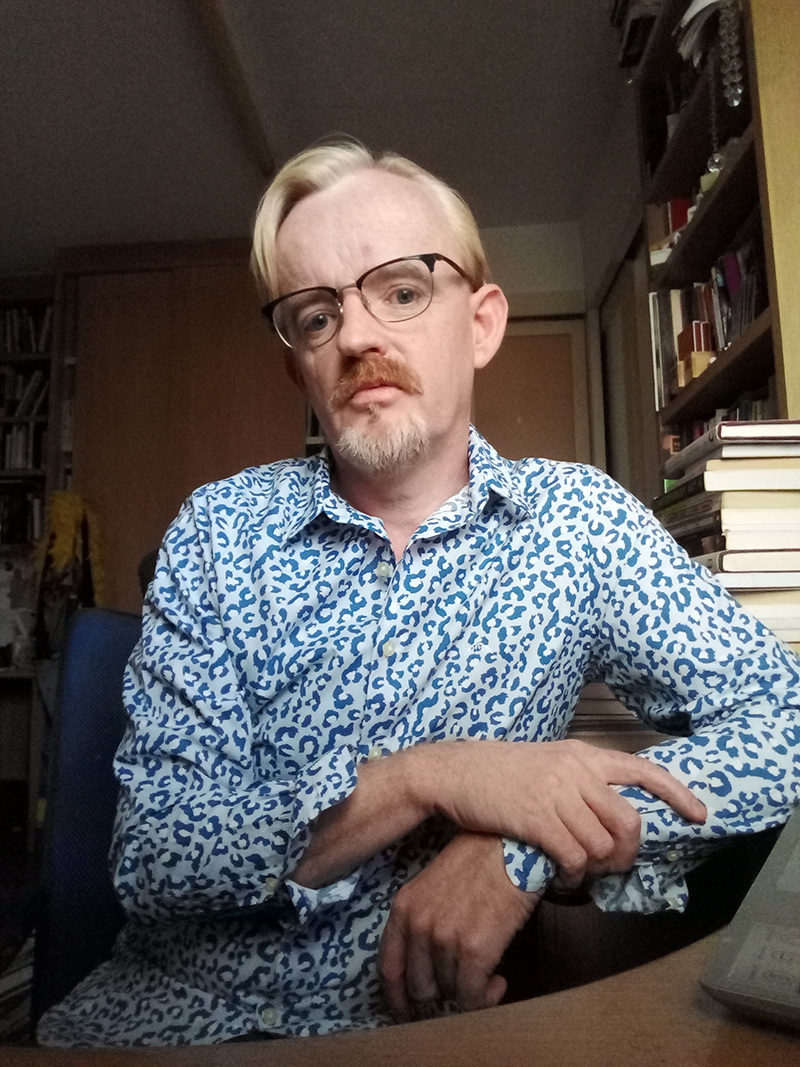
You established Brian Curtin Projects in 2018 as a mantle for different activities further to closing H Project Space, a venue for installations in Bangkok that ran for seven years. Are there conflicts or contradictions in managing your different activities, between writing, curating and general organizing and facilitating?
In practical terms, no. All work stems from the same source of ideas and, albeit ideally, are in dialogue. I’m writing a workshop at the moment that throws the question “Why an exhibition and not another format?” back to participants – further to their research on a particular topic. If you don’t label yourself or your work in advance, this allows you to fine-tune the outcome when you start to make decisions about the final form of your research. I became interested in this after leading the month-long programme Uncommon Pursuits: A Temporary School for Emergent Curators in Southeast Asia at Sàn Art in Ho Chi Minh City last year. There the presupposition of a distinct curatorial-exhibitionary context presented a serious challenge for the ideas of some of the participants.
However, in professional terms, we can think of a comment once made by the London-based curator, writer and lecturer, Andrew Renton, when he was a nominator for the Turner Prize. He said that the more qualified and experienced you become, the more of a conflict of interest you are in. I’ve regularly asked peers and acquaintances questions like “Would you review an artist you are close to?” and “Do you accept commissions from commercial galleries?” Answers are pretty comparable (if defensive!), along the lines of “Yes, but…” It’s a question of integrity, really. If you believe a certain artist’s practice should be receiving notice, and have good reasons for that belief, you will do what you can do to support them. And, as the adage goes, artists shouldn’t be punished for any relationship they have to you. It’s also a question of where everyone is in the grand scheme of things: working with younger artists and galleries is very different from dealing with more established players, where the possibility of conflicts of interest become very real due to firm financial stakes.
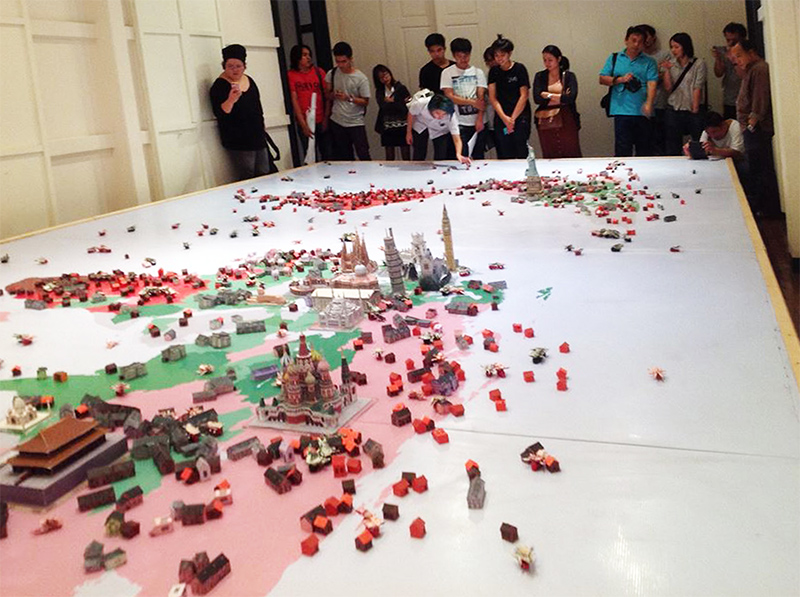
Installation by Wantanee Siripattananuntakul as part of 2 person show titled State of the Ridiculous at H Project Space 2015
Tell us about your working methods and the ideas that link your different activities.
Dialogue has always been a key idea, whether in general or more sophisticated terms: between artists, media or different contexts. However, when I started curating in Bangkok around 2007, the situation here was much different than it is now. Back then, the Bangkok Art and Culture Centre (BACC) didn’t exist, few foreign artists exhibited here, and there was little consciousness about belonging to the region of Southeast Asia. This has all changed in recent years, quite specifically in terms of major institutional focuses on diverse forms of ‘contemporary art’ (including the various Biennales that began in Thailand last year) and any number of new initiatives – between publications from academia and art fairs – that explore regional relationships. Consequently, I would now have far less a sense of contributing to the building of an art scene than wondering about how to respond to these changes. Dialogue is still at issue, but mostly with a closer engagement with the specifics of what artists do.
I tend to be drawn to artists who maintain a studio practice based on working with the physical aspects of materials and space. Here we can talk about primary and sensual engagement that can unsettle familiar relationships and understandings, and this draws on my background interests in feminist and queer theories. Also, I am interested in how an artist’s practice evolves over time. This is another form of dialogue and an on-going challenge: how to reconcile what an artist says about their work with the experience of the work and the variety of contexts to which their art can belong.
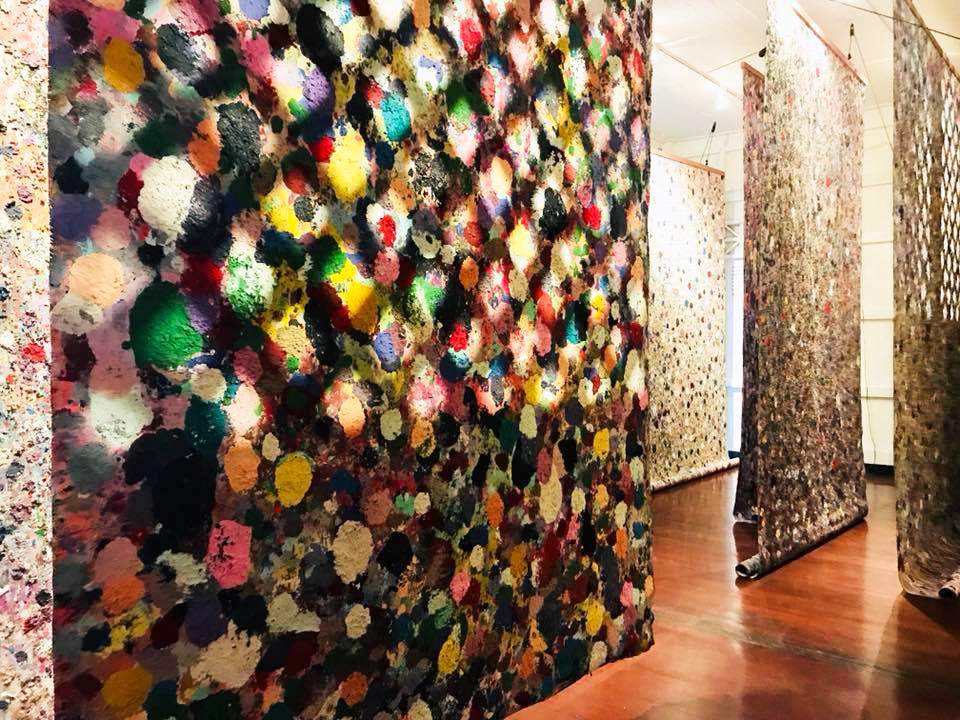
Installation view of Beautiful Futures by Mit Jai Inn at H Gallery Bangkok 2018 Photograph by Kan Nathiwutthikun
How does this practically unfold and what are the usual challenges you face, from research to execution?
You tend to look at younger artists as an index of what’s generally changing, and older artists in terms of how fresher views of their practice could be elaborated. I am old enough to understand why knowing an artist’s practice over time will strengthen any curatorial or writing you do. Examples here would be seeing many exhibitions by the Thai artist Sakarin Krue-On over the years, or all the studio visits and conversations with Jakkai Siributr. I don’t have specific research interests in Thailand or “Asia” so deciding when and how to be sensitive to these contexts is a perennial challenge. Funding for projects is also a perpetual problem and deciding in advance if there is a substantial audience, or if you should really care about this.
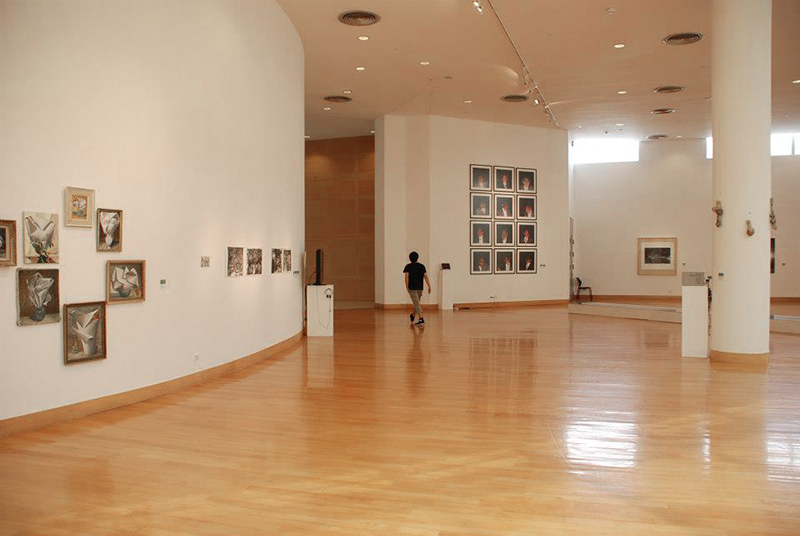
Installation view of Possession 2013 at Bangkok Art and Culture Centre 2013
What milestones have you achieved so far, in this respect?
A curatorial project with the UK-based artist Steve Dutton titled Possession, which we exhibited in Thailand in 2013 and the UK the following year, achieved an ideal of dialogue. It was a large group exhibition that looked at how contemporary artists’ use found images and objects. We were interested in historical shifts for this once radical method, which previously critiqued ideas about authorship and originality. In a post-digital age these ideas become moot. But many artists were included who didn’t emerge from this specific art world context, such as Dany Chan’s collages of traditional Khmer motifs or Tintin Cooper’s interest in current media depictions of masculinity. The theme of the exhibition could thus open out to questions of how current artists ‘possess’ objects and images, where the lines of difference can be drawn (or not) to visual and material cultures at large. Multiple and parallel histories were evoked and relationships between very different artists established.
H Project Space was generally a milestone, as we achieved a great experimentation throughout all the installations over the years. And I’m repeatedly interviewed about the space!

Opening reception for Body Borders by Pinaree Sanpitak at H Gallery Bangkok 2011
Do you try to create something completely new with each project?
I tend to elaborate core interests in different ways. But most projects are fundamentally collaborative so tend to be fresh as your network changes.

Installation view with work by Noll Khunkitti for Time Less Held Artists Revisiting the Overlooked at Tadu Contemporary Art in Bangkok 2018
Which exhibitions, performances or other events did you experience earlier that influenced your work?
I recently answered a similar question for another interview, and can give the same answer. Anya Gallaccio’s Red on Green 1992 at the ICA in London. It was an installation of a bed of 10,000 red roses in a Regency interior. An initial response might have dismissed it as sentimental, and the artwork hardly contrasted with the room, so seemed formally uninteresting. But to spend time with the installation was to allow yourself to think that sentimentality is as valid a response to an artwork as any other. And, on examination, the execution of the installation was more complex than immediately appeared, adding a layer of interest in terms of time and labour. I was thinking of this when I opened H Project Space.
I was an art student in Ireland in the 1980s, when an emergent generation of artists began to seriously push against the traditions handed down to them. On the one hand, they were accused of embracing an ‘international’ language-in, for example, the use of video, seriality, or irony – at the expense of indigenous traditions but the reality was, of course, more complicated. Some artists rejected predominant forms of allegory and abstraction as a means of pointing to specific social shifts: whether the waning influence of the Catholic Church or aspects of the then on-going violence in Northern Ireland. A lot more could be said about this, and, as I understand, something comparable has been happening among artists in Thailand for quite a while.

Student workshop in exhibition Surface Depth at H Gallery Bangkok with work by Simrin Mehra Agarwal 2010
And what do you look for in an artist’s practice when writing?
Over the years, you tend to hone an understanding of what you think artists do particularly well which is to unsettle what we think we know. I am interested in how artists use materials and space to this end, what it can mean to parse successful and less-successful projects in this respect.
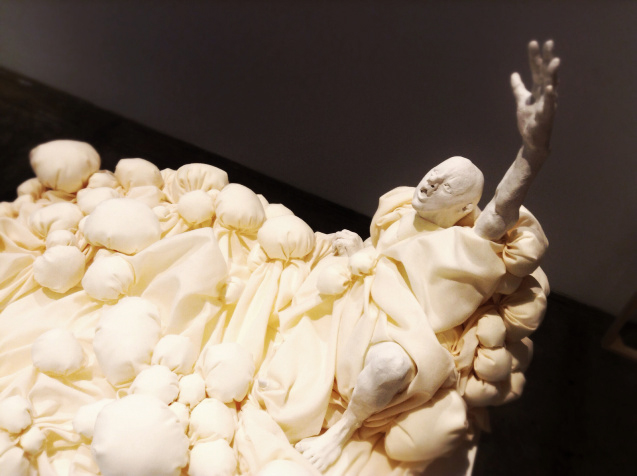
Mycelium Growth 2012 by Peggy Wauters in Gentle War at 100 Tonson Gallery 2014 in Bangkok Ceramic and fabric
What changes have you observed in the cultural landscape over time and how have these impacted your personal evolution?
As mentioned above, much is different now from ten or so years ago. Aside from the establishment of the Bangkok Art and Culture (BACC), there are also places such as the independent Reading Room in Bangkok, run by Narawan Pathomvat since 2009 as a literary resource and seminar hub. The National Gallery Singapore recently began the process of excavating regional histories of contemporary art with exhibitions addressing art from earlier decades and the genealogies of local spaces. We have also seen the establishing of the journal Southeast of Now: Directions in Modern and Contemporary Art in Asia, where many of the editors also work in other capacities so dialogues between different contexts is secure. And so on regarding the increase in biennales and art fairs.
Generally, many of these changes are important because they counter the generic survey-type approach to exhibitions and other forms of representation that have been with us for a long time, and don’t really say or do much. And these changes break the traditional thematic stranglehold of ‘nation’ for a more complex picture. Regarding personal evolution, for those of us who have been working for a longer stretch of time, the possibilities for a shift in thinking is key.
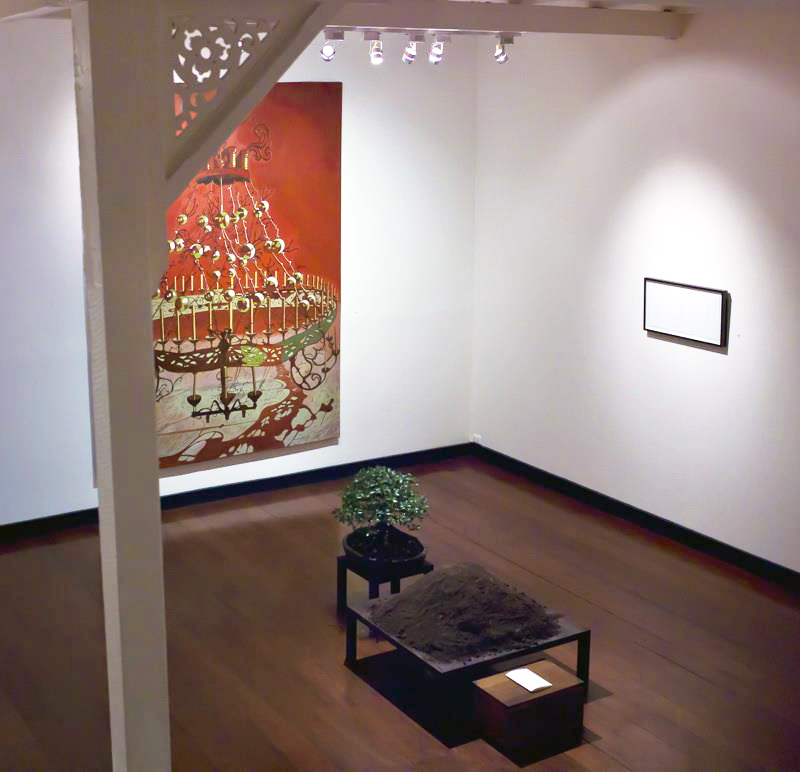
Works by Simrin Mehra-Agarwal Arin Rungjang and Adam James in exhibition Surface Depth at H Gallery Bangkok 2010
How does the [art] world currently look, through your eyes?
As we know, the so-called international art world is experiencing increasing pressure to break any East-West axis, while “the West” is struggling to accommodate changes. Look at the expanded “global” focus of museums in Europe and the US since the late 1990s, including the blockbuster Global Conceptualism: Points of Origin, 1950s-1980s in New York. Other examples include the establishment of London’s Tate Research Centre: Asia in 2012. And there are many more. Savvier institutions tend to deconstruct dominant canons, such as the Netherland’s Van Abbemuseum’s research programme Deviant Practice which examined alternative histories of modernity, theories of decoloniality, and the production of new audiences. I’m also interested in a comment made by the art critic Chris Kraus that because of a current marginalization of humanities in universities, much of this work is moving into art spaces. The Irish Museum of Modern Art, for example, is currently hosting a series of symposia, lectures and publications around a collection of Lucien Freud paintings that draws on contemporary theories and contexts you would more readily expect to find in a university. Para Site in Hong Kong does similar work. These seem to be the major points of interests in terms of change.
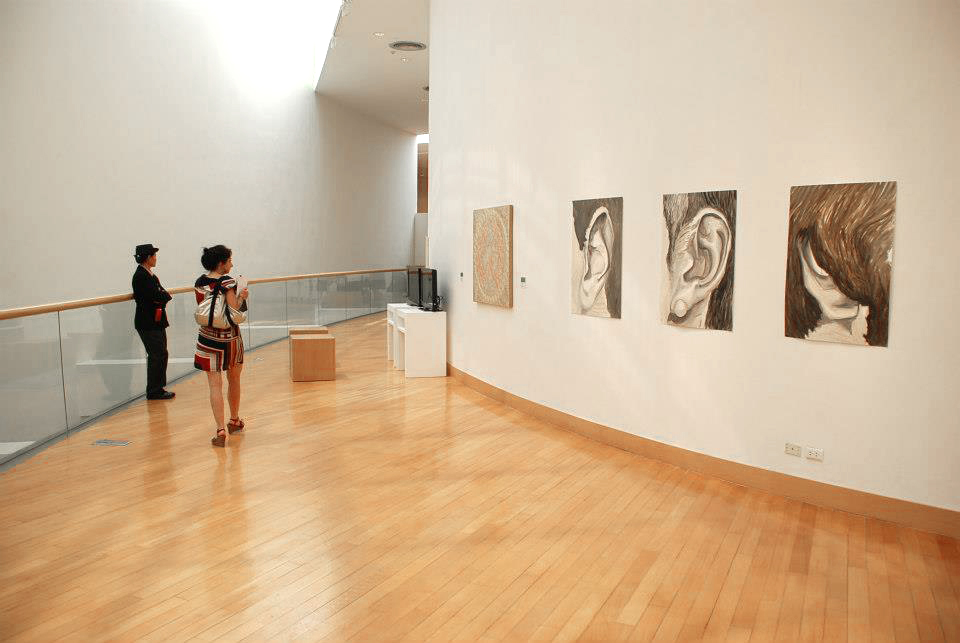
Works by Tintin Cooper in Possession co curated with Steve Dutton at Bangkok Art and Culture Center 2013
What current projects from you can we look forward to?
I have a rolling professional relationship with the photographer and filmmaker Ohm Phanphiroj who is currently based in the US, and we are working on what will hopefully be a major exhibition of his recent works while addressing interests that have been consistent in his output. Ohm’s The Gina Project, began in 2016, looks partly at the currency of photography for online dating and queer hook-up apps. We’re interested in how appearances can shape desires and identities in this context, but also pernicious aspects such as deception, vicariousness and voyeurism. Our question is essentially if we can revise these aspects in a more critical way, perhaps as a form of queer agency, however politically ambivalent.
As told to Sonalee Tomar for The Indian Curator.
Before you go – you might like to browse the Asian Curator curatorial archives . Contemporary art curators and international gallerists define their curatorial policies and share stories and insights about the inner runnings of the contemporary art world.











Add Comment